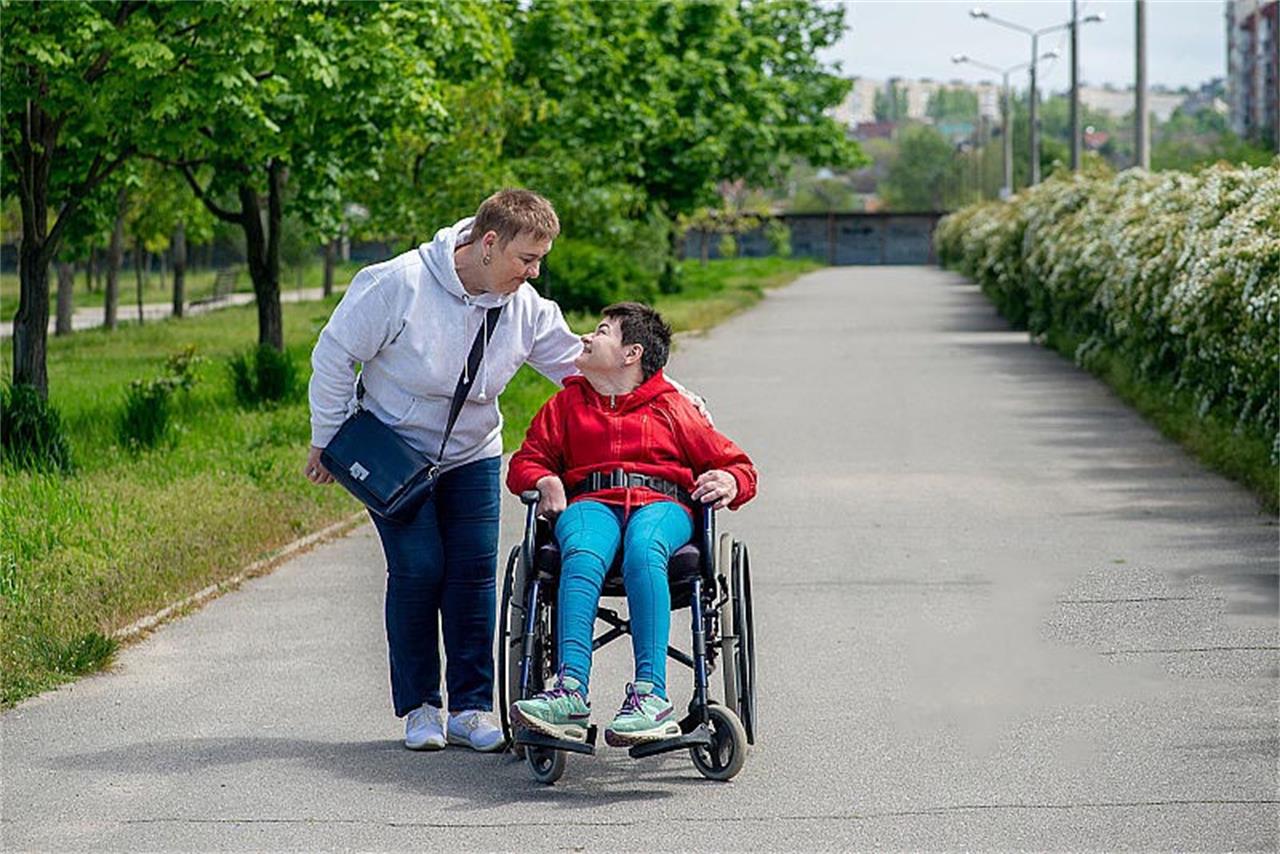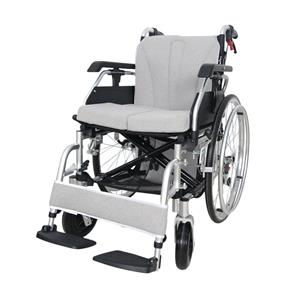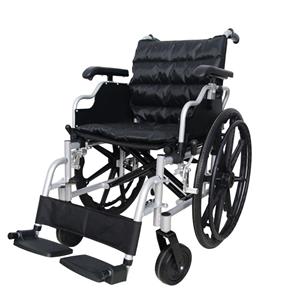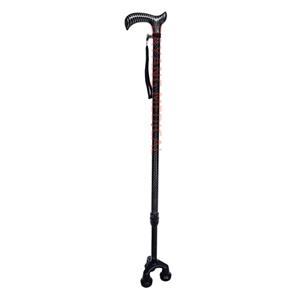ما هو اسم الكرسي المتحرك لمرضى الشلل الدماغي؟
أنواع الكراسي المتحركة لمرضى الشلل الدماغي
1. الكراسي المتحركة اليدوية
الكراسي المتحركة اليدوية هي الشكل الأساسي لمساعدة الأشخاص المصابين بالشلل الدماغي على الحركة. يتم دفعها يدويًا بواسطة المستخدم أو بواسطة مقدم الرعاية. تأتي هذه الكراسي المتحركة بأحجام وتكوينات مختلفة لتناسب أنواع الجسم واحتياجاته المختلفة. ومع ذلك، قد لا تكون الكراسي المتحركة اليدوية مناسبة للأفراد الذين يعانون من ضعف عضلي شديد أو قوة محدودة في الجزء العلوي من الجسم.
2. الكراسي المتحركة الكهربائية لمرضى الشلل الدماغي
الكراسي المتحركة الكهربائية، والمعروفة أيضًا باسم الكراسي المتحركة الكهربائية، هي أجهزة تعمل بمحركات توفر قدرًا أكبر من الاستقلال للأفراد ذوي القدرة المحدودة على الحركة. يتم التحكم فيها من قبل المستخدم من خلال عصا التحكم أو أجهزة الإدخال الأخرى، مما يسمح لهم بالتنقل في بيئتهم بسهولة.الكراسي المتحركة الكهربائية لمرضى الشلل الدماغيغالبًا ما يأتي المرضى بميزات مخصصة مثل:
· الإمالة في المساحة: تسمح هذه الميزة بإمالة المقعد، مما يوفر تخفيف الضغط ويعزز الدورة الدموية بشكل أفضل.
· مسند الظهر المتكئ: يمكن أن يساعد مسند الظهر المتكئ في الحفاظ على وضعية مريحة وتقليل خطر الإصابة بقرح الضغط.
· مساند الساق المرتفعة: يمكن تعديلها إلى زوايا مختلفة، مما يوفر الراحة والدعم للساقين.
3. الكراسي المتحركة الآلية لمرضى الشلل الدماغي
الكراسي المتحركة الآلية تشبه الكراسي المتحركة الكهربائية ولكنها قد توفر ميزات إضافية وخيارات تخصيص. وهي مصممة لتوفير مستوى أعلى من الاستقلال والتحكم للمستخدمين. بعضالكراسي المتحركة الآلية لمرضى الشلل الدماغيتشمل قائمة المرضى:
· عناصر التحكم الذكية في القيادة: أنظمة تحكم متقدمة تتكيف مع أنماط قيادة المستخدم، مما يجعل التنقل أكثر سهولة وكفاءة.
· القدرة على التعامل مع التضاريس الوعرة: تم تصميم بعض الكراسي المتحركة الآلية للتعامل مع الأسطح غير المستوية والبيئات الخارجية، مما يوفر خيارات تنقل أكبر.
· أنظمة الجلوس القابلة للتخصيص: يمكن تصميم هذه الأنظمة لتتناسب مع احتياجات المستخدم المحددة، مما يوفر الدعم والراحة الأمثل.

فوائد الكراسي المتحركة لمرضى الشلل الدماغي
تحسين القدرة على الحركة
الكراسي المتحركة لمرضى الشلل الدماغيتوفير وسيلة للتنقل المستقل، مما يسمح للأفراد بالتنقل في منازلهم ومدارسهم ومجتمعاتهم بسهولة. ويمكن أن يؤدي هذا التنقل المتزايد إلى تحسين نوعية الحياة وزيادة المشاركة في الأنشطة الاجتماعية.
راحة ودعم معززين
تم تصميم الكراسي المتحركة المتخصصة لمرضى الشلل الدماغي مع مراعاة راحة المستخدم ودعمه. يمكن أن تساعد الميزات مثل إمكانية إمالة الكرسي في المساحة، ومساند الظهر القابلة للإمالة، وأنظمة الجلوس القابلة للتخصيص في الحفاظ على الوضعية الصحيحة، وتقليل خطر الإصابة بقرح الضغط، وتوفير الراحة العامة.
زيادة السلامة
غالبًا ما تأتي الكراسي المتحركة المخصصة لمرضى الشلل الدماغي مزودة بخصائص أمان مثل العجلات المضادة للانقلاب وأحزمة الأمان الآمنة وأنظمة الكبح المتقدمة. تساعد هذه الخصائص في ضمان سلامة المستخدم أثناء التنقل في بيئات مختلفة.
حلول مخصصة
واحدة من المزايا الرئيسية لـكراسي متحركة لمرضى الشلل الدماغيتتمثل القدرة على تخصيص الكرسي المتحرك لتلبية احتياجات الفرد المحددة في إمكانية إجراء تعديلات على حجم الكرسي المتحرك ونظام الجلوس وآليات التحكم، مما يضمن ملاءمة مثالية ووظائف مثالية.
التحديات والاعتبارات
يكلف
قد تكون الكراسي المتحركة المتخصصة لمرضى الشلل الدماغي باهظة الثمن، ولا تغطي جميع شركات التأمين التكلفة الكاملة. ومن الضروري أن تبحث الأسر والأفراد عن خيارات التمويل وأن يعملوا مع المتخصصين في الرعاية الصحية لتحديد الحل الأكثر فعالية من حيث التكلفة.
الصيانة والإصلاح
تتطلب الكراسي المتحركة الكهربائية والآلية صيانة منتظمة وقد تحتاج إلى إصلاحات بمرور الوقت. من الأهمية بمكان أن يكون لديك القدرة على الوصول إلى مقدمي خدمات موثوق بهم وأن يكون لديك ميزانية لتكاليف الصيانة المستمرة.
التدريب والتكيف
قد يستغرق تعلم كيفية تشغيل الكرسي المتحرك، وخاصة الكرسي الكهربائي أو الآلي، وقتًا وممارسة. وقد يحتاج الأفراد المصابون بالشلل الدماغي ومقدمو الرعاية لهم إلى التدريب لضمان الاستخدام الآمن والفعال للكرسي المتحرك.
خاتمة
تلعب الكراسي المتحركة لمرضى الشلل الدماغي، بما في ذلك الخيارات الكهربائية والآلية، دورًا حيويًا في تحسين جودة الحياة للأفراد المصابين بهذه الحالة. فهي توفر الاستقلال والراحة والدعم، مما يسمح للمستخدمين بالمشاركة في الأنشطة اليومية بسهولة أكبر. من الضروري العمل مع المتخصصين في الرعاية الصحية لتحديد الكرسي المتحرك الأكثر ملاءمة لاحتياجات كل فرد والنظر في التكاليف والصيانة والتدريب المطلوب لاستخدام هذه الأجهزة.




